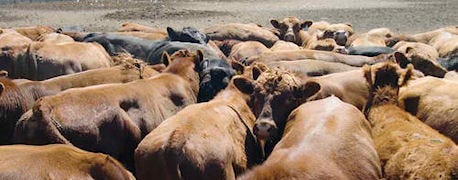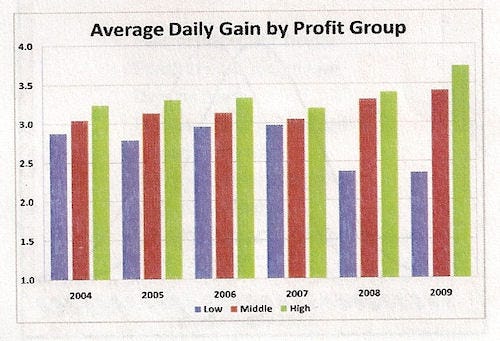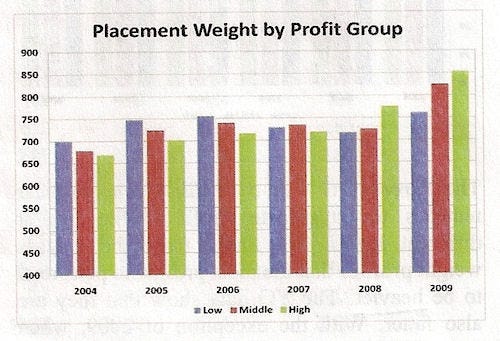
High-priced feed for cattle feeders should make some opportunities for stocker operators and backgrounders.
The data says feeders will want to take cattle into feedlots at heavier weights and also feed them to heavier weights. Further, the better cattle gain and grade the higher their value in times of such high-cost feed.
In the past year Shawn Walter has been talking quite a bit about how fed-cattle finished weights counter-intuitively get heavier when feed prices are high. He also says backgrounders should be able to find profit opportunities in these conditions.

High Feedlot Cost Of Gain Could Help Backgrounders
Walter is owner of Professional Cattle Consultants, a feedlot data management and analysis firm which serves feedlots across the nation. PCC has a database with closeout data on more than 100 million head.
The situation today is that feedlot breakevens have been about $1.33 per cwt. May through July of this year. The next several months look like more of the same, with breakevens in the range of $1.30-$1.35 per cwt.
"But I know a lot of backgrounders in Kansas, Texas and Oklahoma, for example, who can put on gain for a lot less than that and should be able to make some money taking those cattle up to 900 pounds or so," he says.
"It's amazing what some of them can do with byproducts and they have some real advantages over the big feedyards because they can use smaller volumes of those byproducts which the big lots often can't."
This is proven realistic by research Walter has disclosed over the past year which shows when feed costs are high, fed-cattle closing weights actually go up. This is counter-intuitive to what many people believe.

These graphs show how cattle feeders place cattle bigger when grain is high and also make more profit from high-gaining cattle -- likely a trait they share with stocker operators.
When feed costs were nearly this high in 2008-2009, topping out at $315 per ton, Walter showed that the most profitable cattle were heavier, with higher average daily gains, and higher-grading carcasses. However, he has shown grade is less important when the Choice-Select spread narrows.
~~~PAGE_BREAK_HERE~~~Real feed costs among PCC customers this fall are averaging about $350 per ton, Walter says.
The thing which could alter some of the outcomes this year is the nearly national lack of forage and the necessity to put cattle somewhere. Nonetheless Walter says this is where backgrounders might really compete.
He adds that all his studies are on entire pens of cattle, which are biologically diverse populations. Anything such as genetic testing which could narrow the diversity and move it in the direction of profitable traits should increase profitability for cattle you own.

These graphs show how cattle feeders place cattle bigger when grain is high and also make more profit from high-gaining cattle -- likely a trait they share with stocker operators.
Here's more thoughts on profits
When Shawn Walter and Ron Hale put together their study on profit profiles of feeder cattle for their clients they wanted to demonstrate real profit opportunities.
The most shocking thing may be that feeding cattle bigger, albeit efficient cattle that were placed at heavier weights, is more profitable when ration prices are high.
Perhaps more important and not so surprising was that cattle posting the highest average daily gains and the best feed efficiency were most profitable. When Walter and Hale divided cattle into three groups on profitability -- high, middle and low -- they found the top profit group posted gains of 3.66 pounds per day versus the low-profit group at 2.44 pounds per day.
They also noted when feed costs were high the cattle that went on feed heaviest were the most profitable. These seemed to just be good-growing, efficient cattle, the same kind that usually make money for stocker/backgrounders.
They also noted every month the closeouts showed some cattle were priced $100 over the average industry profitability and some were $100 under it. That huge variability, they say, generally means there is opportunity for improvement in the fundamental quality of the cattle being fed, which could also be true for cattle being grazed by stocker/backgrounders.
About the Author(s)
You May Also Like




